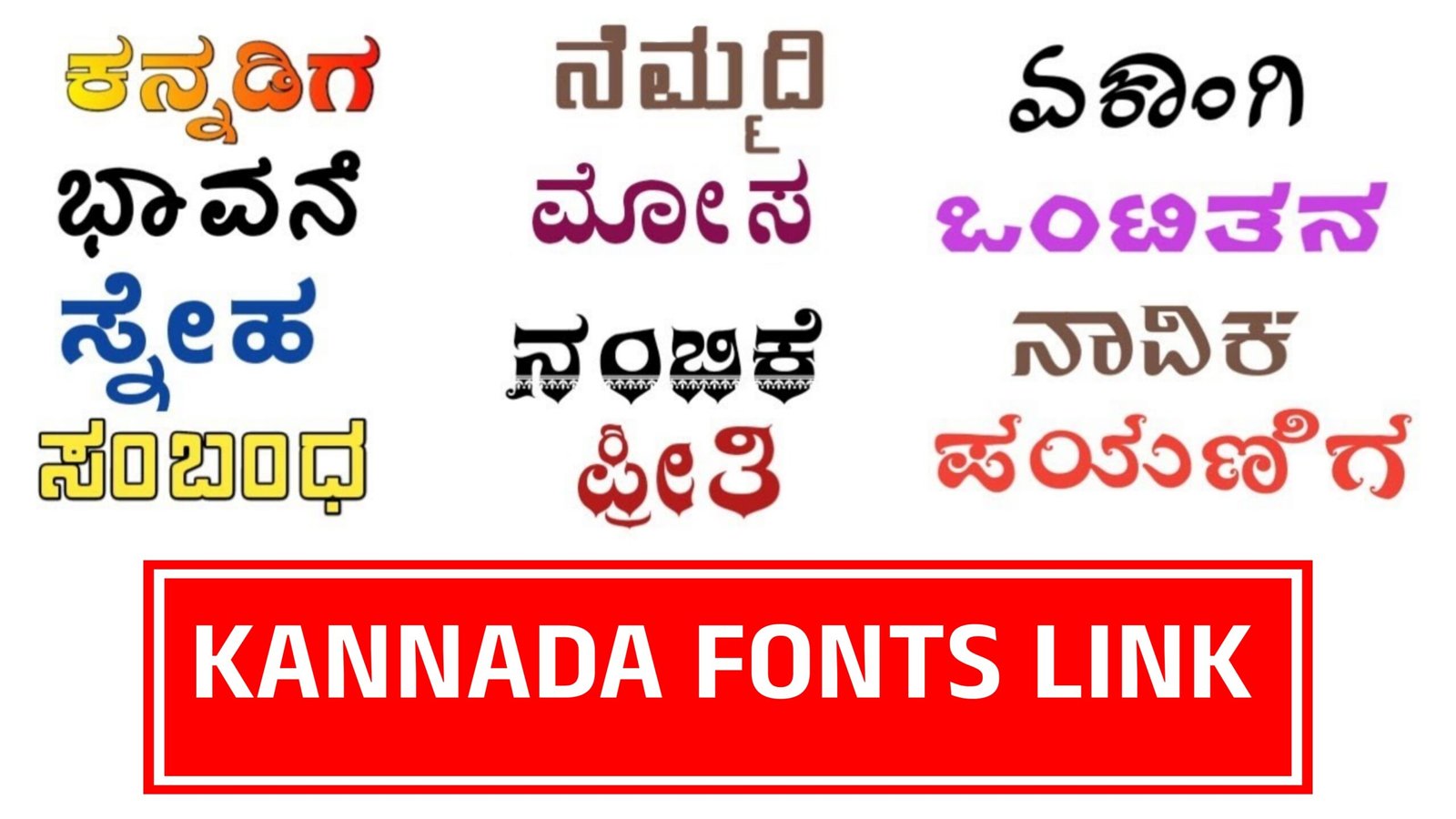Kannada is one of the oldest and most beautiful languages of India, spoken predominantly in the state of Karnataka. The rise of digital communication has made it essential for Kannada to be supported across all platforms – websites, documents, apps, and social media. This is where Kannada fonts play a major role.
In this article, we will explore different types of Kannada fonts, how they work, and how to use them effectively on computers, mobiles, and websites.
1. What Are Kannada Fonts?
Kannada fonts are digital typefaces that allow users to read and write in the Kannada script using digital devices. These fonts map Kannada letters to the screen using Unicode or legacy encoding formats.
Fonts are essential to:
- Display Kannada text properly
- Write in Kannada on apps like MS Word, Photoshop, or Canva
- Build Kannada websites
- Design graphics or invitations in Kannada
- Read newspapers, books, or articles digitally
2. Types of Kannada Fonts
There are mainly two types of Kannada fonts used widely:
A. Unicode Kannada Fonts
These are modern fonts that follow the Unicode standard, which is a global encoding system for all scripts.
Popular Unicode Kannada Fonts:
- Noto Sans Kannada – Designed by Google, clean and easy to read
- Tunga – Comes pre-installed in Windows OS
- Baloo Tamma – A stylish rounded Unicode font
- Kedage – Widely used in government and academic settings
- Mallige – Designed for clarity and compatibility
Advantages:
- Supported by all devices and browsers
- Easy to copy-paste
- SEO-friendly (search engines can read it)
- Works well with social media
B. Legacy Kannada Fonts
These are old-style fonts created before Unicode became popular. They do not use standard Unicode characters but use custom encoding.
Popular Legacy Kannada Fonts:
- Baraha – Very popular in early 2000s
- Nudi – Used by many government departments in Karnataka
- Shree-Kannada-0109 – Used in older desktop publishing (DTP) software
Disadvantages:
- Not compatible with modern websites or apps
- Difficult to convert into Unicode
- Text cannot be read on non-Kannada systems
3. How Do Kannada Fonts Work?
A. Font Rendering Engine
The system or application uses a font rendering engine to display Kannada characters properly on the screen. This engine understands the structure of Kannada letters, including vowels (swaragalu) and consonants (vyanjanagalu).
B. Input Method Editors (IMEs)
To type in Kannada, we use Kannada Keyboard Layouts or Input Tools, such as:
- Google Input Tools (Kannada)
- Baraha IME
- Nudi IME
- Windows Language Settings
These tools convert the typed characters (like “na”, “ra”, “ma”) into Kannada script using a selected font.
C. Encoding System
Unicode assigns a unique number to every Kannada character (e.g., ನ = U+0CA8). The font uses this code to display the correct symbol on the screen.
Legacy fonts use their own non-standard codes, which is why they are not compatible across all platforms.
4. Where Are Kannada Fonts Used?
A. Government Work
Government offices use fonts like Nudi or Kedage for official documents, certificates, and circulars.
B. Design and Publishing
Graphic designers use fonts like Baloo Tamma or Mallige in Photoshop, CorelDRAW, or Canva for invitations, posters, or banners.
C. Web and Mobile Apps
Websites and mobile apps prefer Unicode fonts like Noto Sans Kannada because they support HTML and CSS.
D. Education
Schools, colleges, and exam boards use Kannada fonts for textbooks, question papers, and e-learning apps.
5. How to Install Kannada Fonts?
For Windows:
- Download the font file (usually .ttf or .otf).
- Right-click the file and select “Install”.
- Now, the font is ready to use in MS Word, Photoshop, etc.
For Android:
- Use apps like Google Indic Keyboard or Kannada Keyboard by Desh Keyboards.
- To display Kannada, ensure the system language includes Kannada support.
6. How to Convert Legacy Fonts to Unicode?
Sometimes, old files use Nudi or Baraha fonts. To use these texts in modern platforms, you must convert to Unicode.
Tools for conversion:
- Baraha Convert Tool (Free)
- Online Legacy-to-Unicode Converters
- Google Input Tools (for retyping)
Steps:
- Copy the legacy text
- Paste it into the converter
- Choose correct font type
- Click Convert
- Use Unicode output as needed
7. Kannada Font Compatibility Issues
Some common problems include:
- Kannada text not displaying properly
- Fonts not rendering on Android/iPhone
- Cut-off letters in Word or PDF
- Encoding mismatch (especially with legacy fonts)
Solutions:
- Always use Unicode fonts
- Embed fonts in PDFs
- Use Google Fonts for websites
- Install necessary language packs on Windows or Android
8. Best Kannada Fonts for Different Use Cases
| Use Case | Recommended Font |
|---|---|
| Websites | Noto Sans Kannada |
| Invitations/Posters | Baloo Tamma, Mallige |
| Government Documents | Nudi, Kedage |
| Reading Content | Tunga, Noto Serif Kannada |
| Mobile App UI | Google Noto Fonts |
9. Tips for Using Kannada Fonts Effectively
- Always use Unicode fonts for better compatibility
- Choose fonts that suit the mood: formal for documents, stylish for design
- Avoid legacy fonts unless necessary
- Use font embedding in PDFs and web to prevent font loss
- Ensure readability across screen sizes
Conclusion
Kannada fonts are essential tools in preserving the beauty and digital presence of the Kannada language. From Unicode to legacy formats, from government work to graphic design, there are plenty of font options based on your needs. As a best practice, always prefer Unicode Kannada fonts for universal support, SEO advantages, and seamless communication.
Whether you’re a student, designer, developer, or Kannada language enthusiast, understanding how Kannada fonts work will empower you to create, share, and celebrate the language digitally.
